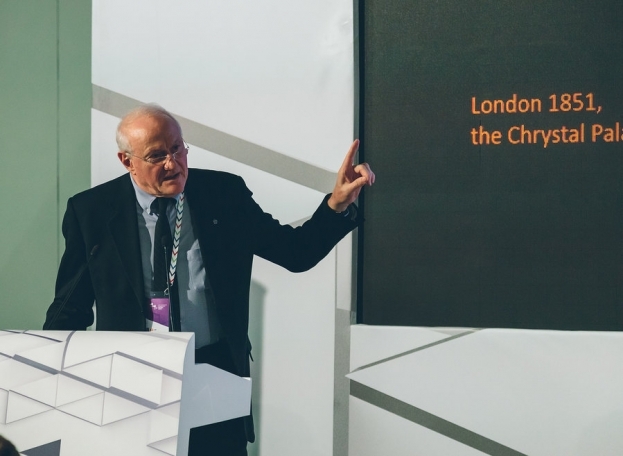Francesco Bandarin: Olympics come to an end, but country image remains

Within the section Creative Environment and Urban Planning UNESCO consultant told about how culture of major international events has been formed and how architecture became a part of it, what organizers should be afraid of and why such events are important to promote cultural exchange.
Section Creative Environment and Urban Planning at the 7th St. Petersburg’s Cultural Forum this year became a platform for discussion of impact of major international events on development of the cities and regions. Multidimensional nature of this process – issues of economics, culture, city infrastructure, cultural exchange, and many other things were discussed by experts from various professional fields, figures from sports and filmmaking, officials and architects, and from different countries: Italy, the UK, Brazil, Switzerland, etc. One of the guests of the section was UNESCO special consultant Francesco Bandarin, who has big experience of work with various countries. We publish brief abstract of his speech with the excursion to the history of major international events.
History of major events and architecture, which was created for them and at the same time formed the image of the city, started not in the 20th century, but much earlier. When we talk about Rome, we, surely, come up with the Colosseum. But in the modern history the accelerator of really international organized events with large-scale constructions was the Industrial Revolution, and all follow-up EXPOs became its successors. The Crystal Palace building became an icon and laid the traditions of engineering, pavilion projects and architecture (for exhibition which took place in London in 1851, there was constructed a cast-iron and plate-glass structure designed by Joseph Paxton, which received the name Crystal Palace, many participants of the section noted that was as a landmark project, including Asif Khan, author of the darkest building on Earth, whose speech we will also be reported on the website of Archcouncil – editorial comment).
First EXPOs, like those in London and Chicago, were set to be temporary. It required some time for the projects that were constructed as part of these EXPOs to be considered as city-planning. So, for example, Expo which was held in Paris in 1889 left to Paris its icon – the Eiffel Tower.
At the end of the 30s the modern approach was adopted, which also includes development of infrastructure. In Rome in 1942 the expo didn’t take place, though there had been built the whole district (district EUR – abbreviation Universal Rome Exposition, Esposizione Universale di Roma, located in the southern part of the Italian capital. The project was implemented by order of Mussolini by group of architects under the lead of Marcello Piacentini. One of the most famous buildings now is a Square Colosseum, where Fendi Headquarter is located – editorial comment). VDNH in Moscow is also a landmark event in this chain of establishment of infrastructure approach in the formation of public spaces for major events.
After this, all EXPOs, exhibitions and Olympic Games the particular approach to the development of the territory and the theme was laid. In this succession Montreal, Seville, Genoa, where 500th anniversary of Discovery of America was used as a base (exposition was held in 1992 under a slogan “Christopher Columbus – ship and sea” – editorial comment), Lisbon, and of course Shanghai, where site for EXPO was created by renovation of the industrial area (the exposition was held in 2010 with the theme “Better City. Better Life”, it was here for the first time, where interaction of the city and the person became the key goal of the exposition, - editorial comment).
There are several problems which the organizers of major international events can face. First of all, it is investments. Such events require considerable financial injections. In the second place, it is absence of plan. Planning is very important. For instance, in Turin expo was held in 1961, but facilities remain empty up to now (International Labour Exhibition in Turin was held under a slogan “Man and his Work”. For it, in particular, Palace of Labour was built – a structure of concrete, glass and aluminum with complicated slabs designed by engineer and architect Pier Luigi Nervi – editorial comment).
This is an important issue for the countries hosting Olympic Games, which requires development of infrastructure, with which it is unclear what to do at the completion of games. In Russia, by the way, this issue has been successfully solved, organizers used already existing facilities, and newly built projects also have found their implementation. But the main thing is that we should understand that we cannot just built monuments, we need to develop infrastructure between them. For this reason, economy is very important, but we shouldn’t forget about urbanism.
All in all, major international events form the image of the country and it is important to bear in mind that an event, EXPO, or Olympics, or any other event, comes to an end, but the image remains.



